Overview
This year was a personal best year for me here in Kona. The conditions for the swim and bike were ideal; allowing me to better handle the run. My goal was to be able to “run the run” here on the Big Island; by that, I meant sub-3:30. I ran 3:30 on the nose, and there wasn’t a single time I slacked the entire day, so, mission accomplished!
For those of you who love bullet points, here you go:
Swim: 1:07
Bike: 4:45
Run: 3:30
Total Time: 9:31
The Training Cycle
This time I had a full year to prepare for Kona. I think qualifying and racing the same year is really, really challenging. I made the most of my time by scheduling fun stuff and really being mindful of my training. In years past, I would break down from run volume; so this year I emphasized the bike (Zwift, anyone?) and did my best to build a sustainable level of run fitness.
The bike volume and Zwift racing protocol worked quite well. A mere six weeks out from Kona I set a new Personal Best Functional Threshold Power. Working to review my data, it was clear however that any further threshold work really wouldn’t do very much for me. And I had already done plenty of volume…so with the help of WSM (Wicked Smart Member) Rich Stanbaugh, we dove into Training Peaks’ WKO and found areas for improvement with my VO2 fitness.
Rather than the “traditional” race specific build, we focused on increasing my VO2 fitness which would, in turn, drive up my threshold. After four weeks of work, I was able to do a 20-minute test that was a full 10% higher than my most recent personal best. Everything I did for the race was built off my PB Threshold Power and NOT the new number…but that told me I was leaving something in the tank.
During this time, I also build up my run to a steady 35 to 40 miles per week. I was able to hit six consecutive weeks of 40 miles, which was a really solid sign. The only downside was the cooler weather.
Access Our Insider Triathlete Email Series
My Race Plan
My plan was fairly simple: smooth swim, really solid bike and a run that wouldn’t quit.
The plan centered around the bike. Building off of the data from the professionals, my plan was to push the bike out to Hawi (mile 60 turn around) and then be really conservative/smart on the return trip so as to avoid accumulating too much heat.
I had two key rides that mimicked the first 3.5 hours of this plan, effectively doing:
Two hours at 280 Watts (136 HR, .77 IF)
Twenty-minute climb at 310 Watts (145 HR, .86 IF)
90-minutes at 250 Watts (132 HR, .69 IF)
Last hour at 235 Watts (130 HR, .65 IF)
Note that I typically race IM events at 245 watts, so this was a big step change for me even though I wasn’t using the new super-high numbers.
The marathon was the second component to the plan. I have always suffered here, so a proper run was the priority. I planned to be in a good position starting the run (minimal accumulated heat) so the goal was to use my Stryd Run Powermeter to cap my wattage. This would prevent a heart rate spike and ensure I could continue running well. I simply took my long run watts from home (approximately 320 watts) and used that as a cap. As long as I ran below that number (but not too far below) I knew that I could run all day.
Race Week to Race Morning
A fantastic week with family and friends. One of the upsides of coming to Kona is that I have a great group of local friends that I connect with each year. Add in a new group of Team Endurance Nation members and it’s just one awesome week!
I also set aside some early time to spend with my family, and it was totally worth it. We did some beach time/exploring and a great Zipline/Waterfall session as well. Along the way my incredible wife and I celebrated our 14th wedding anniversary as well…who could ask for more?
We went to bed the day before with a great forecast ahead of us. The weather said minimal wind and mostly cloudy all day…at the very least I considered that a good omen vs the alternative! Madame Pele must have been in a great mood race day.
The Swim: 1:07 (AGAIN!)
I didn’t really spend much time thinking about the swim, and I think paid the price on race day. My fitness was there for sure, but I simply didn’t have the fluency needed to be really quick in the open water. If I can do this race again, I will certainly spend a bit more time in the pool pre-race and in the open water during race week.
Predicted clouds did roll into Kona early, keeping the morning sun out of our eyes on the return trip to the pier. Personally I simply never found my swim rhythm. There were flashes where I was “on point” but it wasn’t really sustained enough to make a difference.
The Bike: 4:45
Once I rolled out of transition I got right to work on my target wattage. I started my nutrition schedule at 10 minutes in and began hydrating like it was my job. While the clouds were still over Kona, it was already heating up– add some good climbing and it was already feeling like a real race!
Once out on the Queen K, it was time to get to work. I dialed in the 280-watt target and did my best to stay draft legal. It was really hard to find a safe place to ride at times. There’s simply no way anyone can ride away from a strong pack, so the best bet is to keep riding as cleanly and as safely as possible.
There were definitely times on the outbound leg that I had to coast as there were 5 riders all across the road leaving no physical way to pass them safely. The penalty tents were literally overflowing with athletes, so the marshalls were certainly working a great deal. I am sure they got a few calls wrong, but in general, they needed to be aggressive to offset the ride simply from a safety standpoint.
The ride was surging quite a bit, and my heart rate was slightly higher than I wanted. I made the decision not to push too hard here and used all my gearing to make the course as “friendly” as possible. I was hoping to hit the base of the climb at just after 2 hours but instead was there approximately 1o minutes later than planned.
I swapped into “Hawi Climb” mode and dialed in my 310-watt target. It was about this time that I noticed there was very little wind of any kind during the climb. In fact, the only wind really presented itself in the last mile before the turnaround. About as friendly a ride I’ve ever had to this part of the course. We even had a brief spell of rain.
During the return trip, I dialed my wattage back accordingly. It was SERIOUSLY tempting to continue pushing onwards, but I have failed at that strategy too many times already. I let the larger bunches go and focused on riding my own ride. My energy was starting to fade but was on point from a wattage and Heart Rate perspective.
My stomach was rebelling a bit as I had failed to practice my Kona nutrition as well as required. As a result, I also opted for some Coke a few times on the bike course — Kona does have some “perks” I guess! True to plan, the speed was picking up back into town and my lower wattage really didn’t inhibit my forward progress. The last few miles were all about stretching and staying as cool as possible.
The Run: 3:30
Unable to pee on the bike, I did have to take an extra minute in transition to use the portajohn (there’s my “free minute” to go sub-9:30). Otherwise, the transition was deliberate and well-executed. I decided against sitting down as I wanted to avoid tightening up.
I was out and running in fairly short order, with the goal of staying as cool as possible and on target. I can’t say enough about using the Stryd power meter as a damage control device here in the early miles — the heat on Ali’i Drive, right at sea level, is very intense. Relying on Heart Rate alone is insufficient, and my Stryd had me on point. I felt like I wasn’t running at all up to the early hills, but my Stryd said otherwise. And a subsequent review of my data shows these were some of my fastest miles.
I had a bit of stomach discomfort early, so I backed off the food and instead of starting alternating Coke and Gatorade Endurance, both spiked with a dash of Gatorlytes from my Fuel Belt.
The return trip was great, as I was able to see so many friends and teammates out on the run. You have to get the greeting in here, as there is no energy or emotion left once you get to the Queen K.
After high-fiving my family, I was able to actually run (sort of) up Palani hill keeping my watts in check. And, mercifully, the running continued out on the Queen K. I wasn’t flying by any means, but I was passing as many people that were passing me.
By about Mile 13, the battle was on for some calories and to stay cool. I searched desperately for a banana at multiple aid stations. I also had to stop longer to get wet enough…most aid stations were understaffed. Some were incredible, but there were many with just two or three folks desperately pouring water for others to take (definitely some lessons learned for the volunteer coordinators I hope).
The run course changed this year due to the new traffic pattern on the Queen K, forcing us to run further out the highway. I think this made for an easier run on the whole, but man that long trip down into the Energy Lab was longer than ever and just as brutal.
Once back on the highway, having survived the climb, I was resolute to get to work. I swear I was running 7:15/mile pace, but my watch says otherwise. Know this…I was friggin running when I am usually sick, cramping, crying silently or some other predicament.
Each mile brought me one step closer. The 35km mark was particularly difficult, but I was able to get going again once I was soaked. The final climb up to the top of Palani has to be my favorite section to suffer, as that is my personal finish line. It’s all downhill from there…and I enjoyed every minute.
The strong push to the line was fueled by excitement and relief, frankly, in a job well done. I soaked up all the high fives, all the shouts. I got to see my family just before the finish and revealed in the magnificence of that finish line one more time.
The Aftermath
My favorite part of the race is chilling behind the scenes with the other competitors. And there were many, as 2018 was a wickedly fast year. Kudos to all of the competitors who just tore up that course.
After 5 cans of soda, I was well enough to go meet the family. We camped out in our usual spot and waited for our friends and tri-family to roll in.
One by one I was able to see all of my Team Endurance Nation teammates. It was an honor to hear their raw, unadulterated descriptions of their day, not filtered by time or ego. There is no hiding on this island, as everyone who races here eventually learns. Fortune may or may not smile upon you, yours is to only make the most of the chance you’ve been given.
Gear Geek Time:
The Swim:
The Bike:
- Garmin 810 computer
- Shimano DI2 shifting
- Ventum One
- Rotor QXL front chainrings
- Quarq DZero power meter
- Princeton Carbon Wake 6560 Wheels
- Castelli two-piece Stealth kit
- Continental 25 mm tires with latex tubes
- Rudy Project Boost helmet
- BestBikeSplit for Race Plan execution and research
The Run:
- Stryd Powermeter
- Garmin 935 Watch
- Nike Zoom Vaporfly
- FuelBelt Hydration Belt
- Mile18 Race Saver Bag
- Unstoppable Ventum Trucker Hat
Lessons Learned:
So much to say here, but I will try to keep it brief. Here are my thoughts in no particular order.
- Pack Special Needs, T1 and T2 Bags Before I Leave — Why wait until the day before. Just do it, and have them ready…add what’s needed and you are done. This took me a CRAZY long time in Kona, and I would like those two hours back (ps Thanks for the salt Paul!!!!).
- Think Outside the Box with Your Final Build — Training plans are great tools, but ultimately they are just one way to make it to the starting line. If you have the experience and courage, there’s nothing wrong with doing the “best possible” work for you vs just what’s generally accepted. This is where the team comes in handy. Athletes from around the world who can attack a problem with you and give you some of the best advice you’ve ever had. This is what makes EN so amazing, so strong, a true endurance family.
- More Fun/Family Time Makes For a Better Taper — This year was a great reminder of how important it is to just chill out. I really enjoyed my family time, and I think the relaxation really helped set the tone and put me at ease.
- Data Summary Screens Matter — Upon advice, I configured my Garmin 81o cycling computer to have a “live” screen, a “last lap” screen and a “total ride summary” screen. The Last Lap screen let me review the key elements of what I had just done, allowing me to ensure I was on the right path. And the summary screen gave me the big picture data whenever I needed it.
- Running with Power on Race Day is a No-Brainer — As an Endurance Nation athlete, you already have a pretty detailed understanding of the use and role of power. Adding this to the actual race experience will keep you on track and allow you to run what you are functionally capable of running.

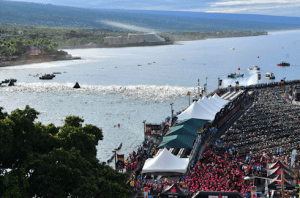
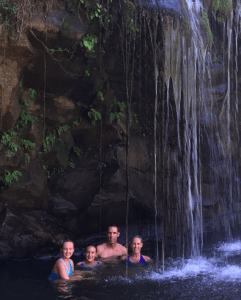
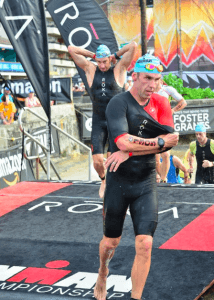
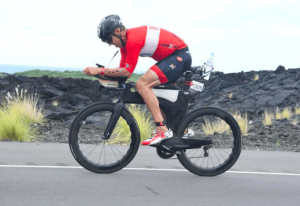

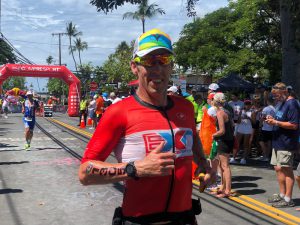

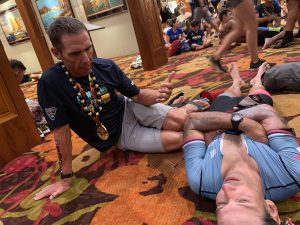
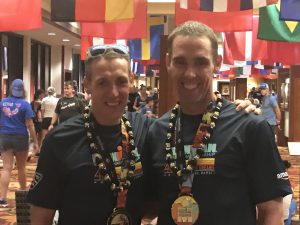
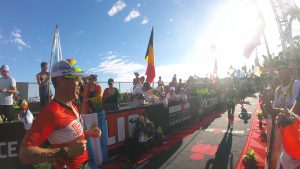
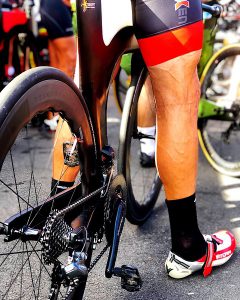

Leave a Reply